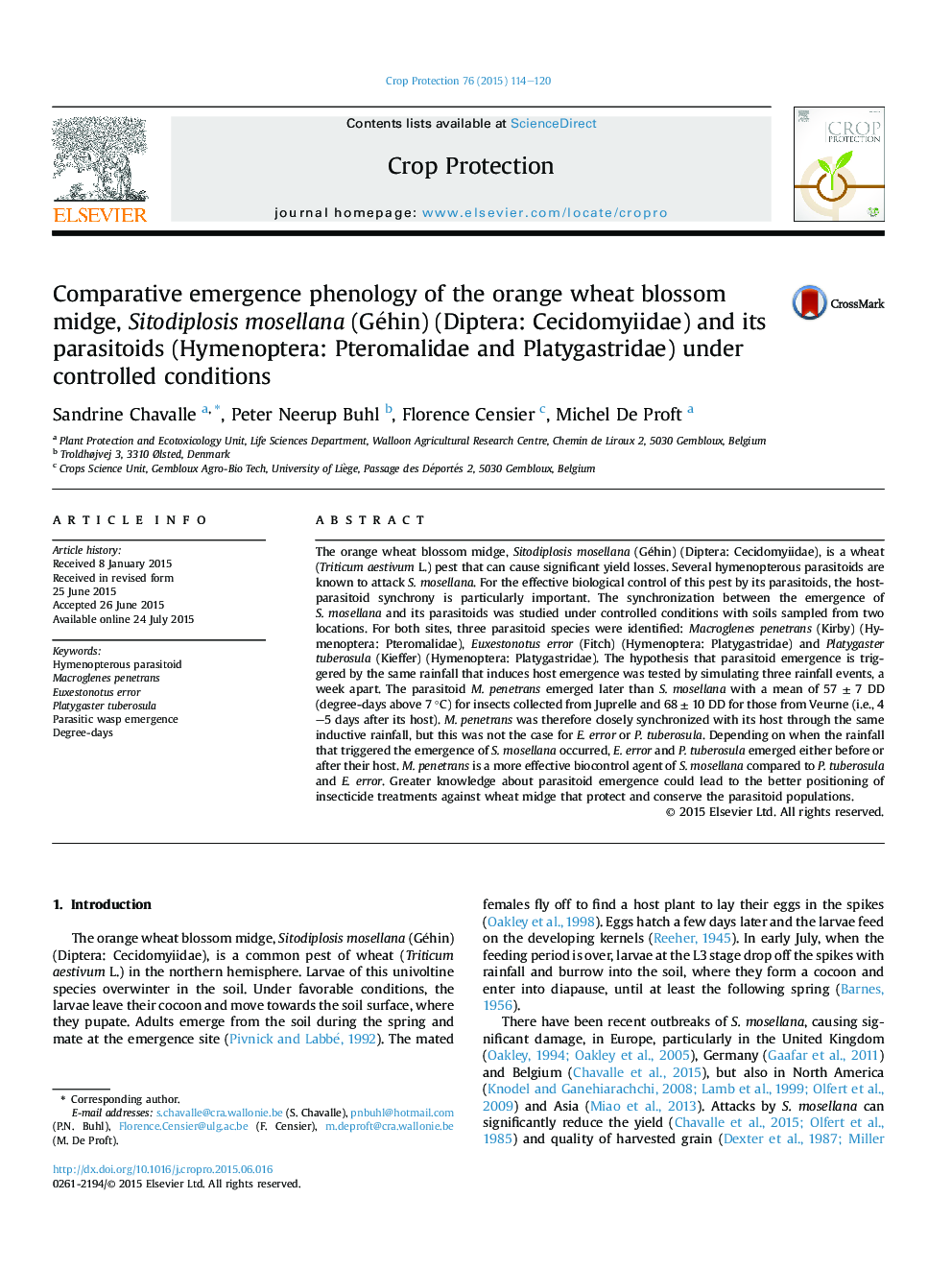| کد مقاله | کد نشریه | سال انتشار | مقاله انگلیسی | نسخه تمام متن |
|---|---|---|---|---|
| 6373408 | 1624311 | 2015 | 7 صفحه PDF | دانلود رایگان |
عنوان انگلیسی مقاله ISI
Comparative emergence phenology of the orange wheat blossom midge, Sitodiplosis mosellana (Géhin) (Diptera: Cecidomyiidae) and its parasitoids (Hymenoptera: Pteromalidae and Platygastridae) under controlled conditions
دانلود مقاله + سفارش ترجمه
دانلود مقاله ISI انگلیسی
رایگان برای ایرانیان
کلمات کلیدی
موضوعات مرتبط
علوم زیستی و بیوفناوری
علوم کشاورزی و بیولوژیک
علوم زراعت و اصلاح نباتات
پیش نمایش صفحه اول مقاله

چکیده انگلیسی
The orange wheat blossom midge, Sitodiplosis mosellana (Géhin) (Diptera: Cecidomyiidae), is a wheat (Triticum aestivum L.) pest that can cause significant yield losses. Several hymenopterous parasitoids are known to attack S. mosellana. For the effective biological control of this pest by its parasitoids, the host-parasitoid synchrony is particularly important. The synchronization between the emergence of S. mosellana and its parasitoids was studied under controlled conditions with soils sampled from two locations. For both sites, three parasitoid species were identified: Macroglenes penetrans (Kirby) (Hymenoptera: Pteromalidae), Euxestonotus error (Fitch) (Hymenoptera: Platygastridae) and Platygaster tuberosula (Kieffer) (Hymenoptera: Platygastridae). The hypothesis that parasitoid emergence is triggered by the same rainfall that induces host emergence was tested by simulating three rainfall events, a week apart. The parasitoid M. penetrans emerged later than S. mosellana with a mean of 57 ± 7 DD (degree-days above 7 °C) for insects collected from Juprelle and 68 ± 10 DD for those from Veurne (i.e., 4-5 days after its host). M. penetrans was therefore closely synchronized with its host through the same inductive rainfall, but this was not the case for E. error or P. tuberosula. Depending on when the rainfall that triggered the emergence of S. mosellana occurred, E. error and P. tuberosula emerged either before or after their host. M. penetrans is a more effective biocontrol agent of S. mosellana compared to P. tuberosula and E. error. Greater knowledge about parasitoid emergence could lead to the better positioning of insecticide treatments against wheat midge that protect and conserve the parasitoid populations.
ناشر
Database: Elsevier - ScienceDirect (ساینس دایرکت)
Journal: Crop Protection - Volume 76, October 2015, Pages 114-120
Journal: Crop Protection - Volume 76, October 2015, Pages 114-120
نویسندگان
Sandrine Chavalle, Peter Neerup Buhl, Florence Censier, Michel De Proft,